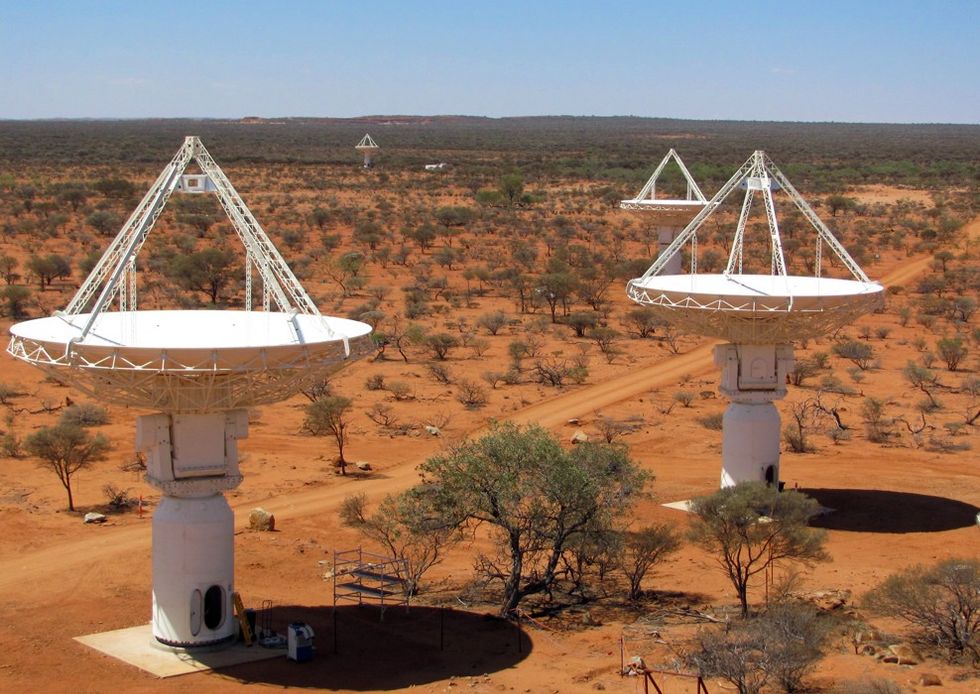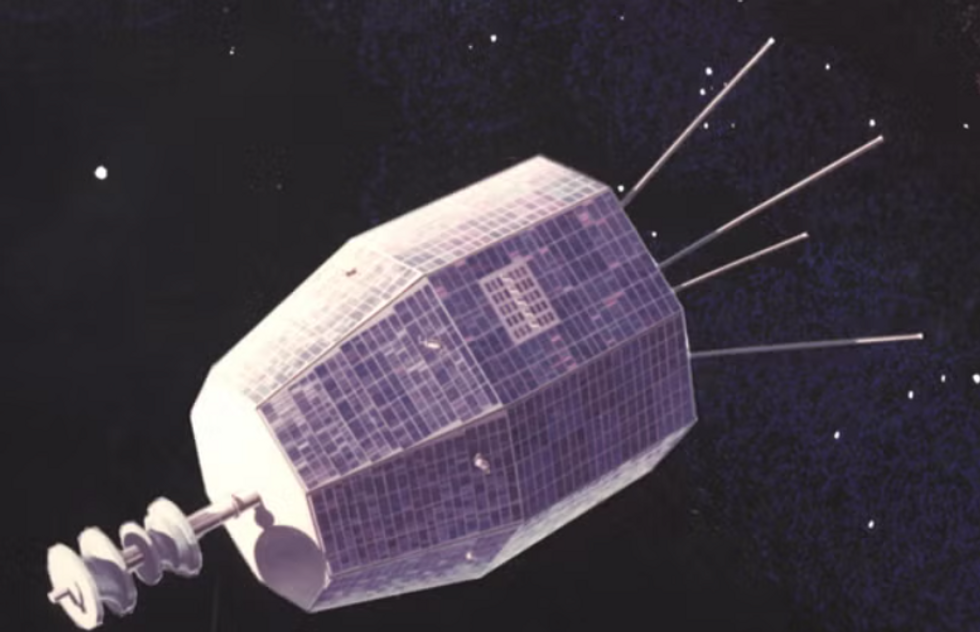Astronomers finally solve year-long space mystery after discovering mysterious signal
The mystery signal took over a year to debunk
Don't Miss
Most Read
Astronomers have finally solved a year-long mystery that had them baffled after discovering a mysterious signal.
Australian scientists have traced a radio burst detected last year to a defunct American satellite from the 1960s orbiting just 4,500km from Earth.
The discovery challenges fundamental assumptions about fast radio bursts, which scientists believed originated exclusively from distant galaxies billions of light years away.
Researchers captured the signal using the Australian Square Kilometre Array Pathfinder telescope in Western Australia, which lasted merely 30 nanoseconds.
After 12 months of investigation, the team identified the source as Relay Two, a telecommunications satellite that ceased operations in 1967.

The team detected the signal using the Australian Square Kilometre Array Pathfinder telescope
|Wikimedia Commons
The burst exhibited peculiar characteristics that immediately puzzled researchers.
Unlike typical fast radio bursts from deep space, this signal showed no dispersion between high and low frequencies, indicating it originated within a few hundred light years of Earth.
The research team said: "We detected a burst. Surprisingly, it showed no evidence of a time delay between high and low frequencies, a phenomenon known as 'dispersion'."
Whilst the fastest previously recorded fast radio burst lasted approximately 10 millionths of a second, this detection comprised an intensely bright pulse lasting mere billionths of a second, followed by two fainter after-pulses.
LATEST DEVELOPMENTS
The investigation proved challenging for the researchers, when they attempted to examine their recordings more closely, the signal had vanished.
Two months of troubleshooting revealed an unexpected problem with their telescope array, when their signal's proximity caused severe blurring in their images, similar to photographing an object too close to a camera lens.
Only by removing some antennas from their analysis could they finally image the burst clearly.
This blurring effect helped them calculate the precise distance of 4,500 kilometres, pointing directly to Relay Two's location at the time of detection.

Relay Two was launched by the US in 1964
|Nasa
Electrostatic discharge remains the leading theory, occurring when satellites accumulate electrical charge from space plasma and suddenly release it.
However, the detected burst was thousands of times shorter than typical electrostatic discharges.
Calculations suggest a 22-microgram particle travelling at 20 kilometres per second could generate such a radio flash, though researchers estimate only a one per cent probability of this scenario.
Relay Two, launched by the United States in 1964, operated for just one year before failing completely by 1967.
Despite speculation about "zombie satellites" reawakening, no onboard system could have produced nanosecond bursts even when operational.











